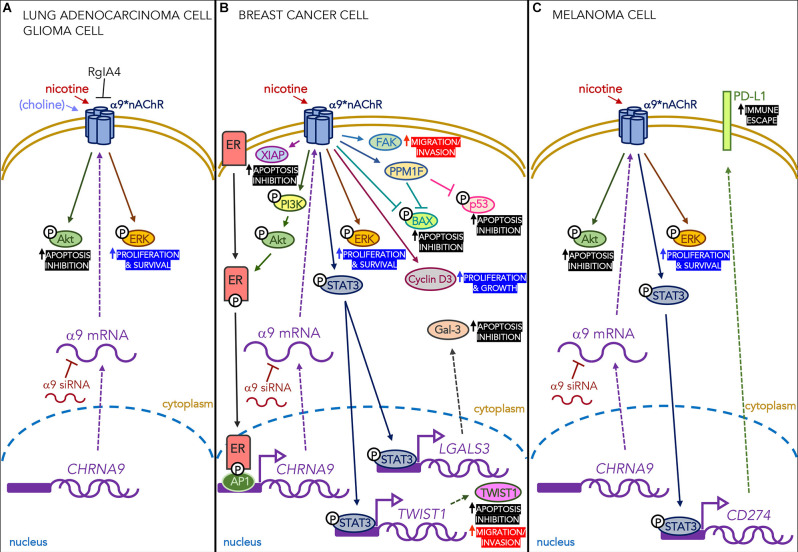Figure 1.
Effects of nicotine acting on α9-containing receptors expressed in different types of cancer cells. (A) Nicotine (in lung adenocarcinoma and glioma cells) and choline (only in glioma cells) mediate proliferative and anti-apoptotic effects through the ERK and Akt signaling pathways. These effects are blocked by the α9-selective antagonist RgIA4 and α9 siRNA. (B) In breast cancer cells, nicotine acting on α9 nAChRs activates the PI3K/Akt pathway that phosphorylates intra-cellular estrogen receptors (ERs) which, in their turn, bind transcription factor AP1 and the CHRNA9 gene promoter region. It also increases the levels of pro-proliferative cyclin D3, the anti-apoptotic protein XIAP, and the PPM1F protein phosphatase that reduces phosphorylated p53 and BAX, thus protecting the cells from apoptosis. Finally, it promotes the phosphorylation of STAT3 and its nuclear translocation, thus increasing the transcription of the gene encoding the anti-apoptotic lectin Gal-3. All of these effects are blocked by α9 siRNA. (C) In melanoma cells, nicotine increases the number of α9 nAChRs and phosphorylates STAT3, which binds the PD-L1 promoter in the nucleus and leads to the higher surface expression of PD-L1, thus promoting the immune escape of cancer cells. The increased expression of PD-L1 protein is down-regulated by α9 siRNA.

